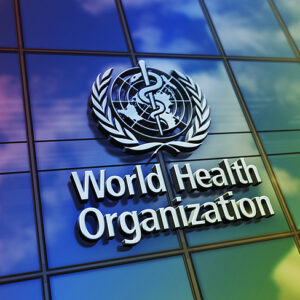The Framework Convention on Tobacco Control promised open science and plural debate. Two decades on, much of it feels like choreography: dissent ushered to the wings, innovation told to wait in the lobby. Now comes the sequel — the World Health Organization’s Pandemic Agreement — built on the script of centralize first, question later.
The evidence didn’t go the way the treaty crowd expected with tobacco harm reduction products. A wide-ranging analysis performed by a Cochrane Tobacco Addiction Group review finds nicotine e‑cigarettes more effective than patches and gum for quitting. In fact, England’s 2022 evidence update reports that lower-risk nicotine products present a fraction of the risks of smoking and shows vaping is the most common quit aid. Yet, at the Conference of the Parties 10, parties sidestepped e‑cigs and moved on. The Rules of Procedure even allow sessions to be closed. If you were trying to incubate orthodoxies, you’d design a process like this.
During COVID-19, cautionary voices warned against policy by megaphone, with one renowned expert describing “the harms of exaggerated information and non-evidence-based measures.”
The pandemic agreement repeats the reflex: an intense center with reassurances on sovereignty, but plenty of binding obligations and a COP-style review machinery. Most contested is the PABS system, which pairs pathogen sharing with a 20 percent set-aside of vaccines, tests and drugs for WHO‑coordinated distribution. Equity by quota is tidy on paper, messy in reality.
Meanwhile, the amended International Health Regulations went into force in September. Not everyone signed on: WHO notes 11 rejections, and Reuters reports the United States was among them. There were also abstentions. A deference to Geneva is no longer automatic.
Follow the money and you see why orthodoxies calcify. For example, Bloomberg Philanthropies has committed $1.6 billion to tobacco control; a majority of funding for the FCTC treaty, around 55 percent, comes from extra-budgetary contributions, many private philanthropic organizations. Those funds achieve wins — but they also pull policy toward preferred toolkits and partners. In pandemics, the gravitational pull is toward platform vaccines, surveillance grids and centralized stockpiles. Less glamorous work — primary care, nutrition and resilient local services — gets crowded out.
Consider the ledger. In 2023, tuberculosis killed more than 1.2 million individuals; malaria killed nearly 600,000; and maternal causes killed a quarter of a million. These aren’t hypotheticals; they are every-year tragedies. Yet, the budgetary glamour flows to one-off crisis architecture. That’s how you get shiny preparedness — and empty clinics.
Harm reduction points to a better way: curiosity over dogma. Try things, measure honestly, adapt fast. If new evidence shows e-cigs carry unanticipated risks, change course; but don’t ban first and test later. Critics such as former WHO scientist David Bell warn that a technocratic, one-size-fits-all regime ossifies quickly and ignores opportunity costs. The tobacco story already taught us that.
Global health has a fork in the road. One path welcomes contestation, objectively studies science, publishes what it can, and respects national autonomy. The other scales up rule-by-elites: closed meetings, tidy narratives and a reflex to centralize. Consumers demonstrated that with vaping, bottom-up innovation can beat top-down orthodoxy.
At the Taxpayers Protection Alliance’s coming “Good COP” conference in Geneva, Switzerland, a slew of scientists and advocates will discuss how this consumer revolution is transforming lives and upending orthodoxies. The time for reform and harm reduction is now.


